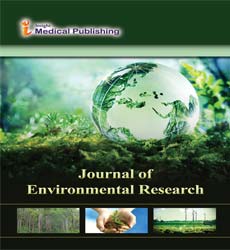Benthic communities as bio-indicators of organic and inorganic pollution in marine environment; case study of Tudor Creek, Mombasa County, Kenya
Joint Event on 4th International Conference on Pollution Control & Sustainable Environment & 6th Edition of International Conference on Water Pollution & Sewage Management
July 26-27, 2018 Rome, Italy
Wanjohi C, Muthumbi W N A, Gichuki N and Okuku E
University of Nairobi, Kenya Kenya Marine and Fisheries Research Institute, Kenya
Posters & Accepted Abstracts: J Environ Res
Abstract
Benthic organisms (macrofauna and meiofauna) are vulnerable to pollution in marine ecosystems due to their prolonged exposure hence efficient bio-indicator of heavy metals and organic contamination. This study focused on Tudor Creek (polluted) and Mida Creek (unpolluted) as the control site. The main objective was to assess uses of benthic communities as bio indicators of marine pollution by determining their density, composition and distribution. Sampling was done during dry season (February) and wet season (May) by systematically laying two transects of 45 m in each site with four stations per transect at 0 m, 15 m, 30 m and 45 m intervals. Densities and diversity indices were calculated using past software. ANOVA was used to assess whether the differences in density and diversity of the meiofauna and macrofauna among the sampling sites and periods were significant. MANOVA was used to assess the density and diversity variability with environmental variables. MDS (multidimensional scaling) on community analysis was done on PRIMER software. There was a large difference in the assemblage composition, density and diversity of both macrofauna and meiofauna between the polluted and unpolluted sites as well as environmental parameters. Nematodes dominated in both sites indicating that they are pollution tolerant unlike copepods which were less in diversity and density in the polluted site. Communities in Mida Creek clustered together showing great similarity unlike in Tudor Creek.
Google Scholar citation report
Citations : 65
Journal of Environmental Research received 65 citations as per Google Scholar report
Abstracted/Indexed in
- Google Scholar
- International Committee of Medical Journal Editors (ICMJE)
Open Access Journals
- Aquaculture & Veterinary Science
- Chemistry & Chemical Sciences
- Clinical Sciences
- Engineering
- General Science
- Genetics & Molecular Biology
- Health Care & Nursing
- Immunology & Microbiology
- Materials Science
- Mathematics & Physics
- Medical Sciences
- Neurology & Psychiatry
- Oncology & Cancer Science
- Pharmaceutical Sciences

